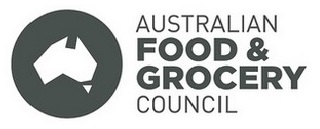 GS1 Australia and Produce Marketing Association Australia-New Zealand (PMA A-NZ) held a joint Fresh Produce Workshop in November 2013 titled, ‘Moving forward with Global Trade Item Numbers (GTINs) and GS1 DataBar’.
GS1 Australia and Produce Marketing Association Australia-New Zealand (PMA A-NZ) held a joint Fresh Produce Workshop in November 2013 titled, ‘Moving forward with Global Trade Item Numbers (GTINs) and GS1 DataBar’.
Thirty-five delegates representing retailers, grower-packers, wholesalers and service providers attended the workshop to develop a roadmap for the implementation of a more effective product identification and traceability system for fresh produce sold as loose or in bulk (i.e. unpackaged).
The workshop focused on the myriad of current identification processes within the Fresh Produce Industry with emphasis on the way forward, requiring brand owner GTINs to pave the way for GS1 DataBar.
GS1 DataBar enables a GTIN to be represented in a smaller bar code enabling the piece of fruit to be scanned instead of being looked up on the system.
PMA A-NZ, GS1 Australia and GS1 New Zealand will continue to promote the benefits of GS1 DataBar to retailers and suppliers throughout Australia and New Zealand as an efficient solution to pricing accuracy, Point-of-Sale (POS) data collection and management, and product identification and traceability (as part of an effective food safety system).
For further information about GS1 DataBar in the Fresh Produce Industry please contact GS1 Australia on 1300 BARCODE (1300 227 263) or email Melanie Wishart.
Important notification to retailers from GS1 Australia
The GS1 System provides retailers with the ability to identify and mark Variable Measure products sold at Point-of-Sale (POS), utilising Restricted Circulation or internal numbering, using the GS1 Prefix range of 20-29.
In the late 1990s, GS1 Australia conducted a survey of retailers and their use of the GS1 (then EAN) internal numbering formats. The purpose of the survey was to identify which of the 20-29 GS1 Prefixes not already reserved by GS1 Australia, were being utilised for internal purposes by the retailer community, and which particular numbers were used less frequently. These numbers would then be used to extend the availability of source marked, supplier branded variable weight products issued by GS1 Australia.
The result of this survey identified that, in addition to the already reserved 28 and 29 GS1 Prefixes, 22 and 24 were the least used prefixes and would be recalled for further allocation by GS1 Australia as of the 30th of June 1998. At this point retailers advised to discontinue the use of these numbers as soon as possible in an open trade environment and all GS1 publications reflected the future use of these two GS1 Prefixes.
This notification serves to advise that GS1 Australia will now commence issuing Variable Measure numbers using the 22 prefix, effective 1st April 2014.
“It is important that relevant parities within these organisations update their systems with the capability of using the 22 prefix. More than likely the recipient of the original notification in 1997 will no longer be holding the same position now. It would be best for businesses still using this prefix to notify us as soon as possible,” urges Sue Schmid, General Manager – Customer Service and Global Standards at GS1 Australia.
Please ensure that all systems are updated accordingly to support the use of the 22 GS1 Prefix for the purpose of Variable Measure products sold at POS. If you are currently using this GS1 Prefix or have any questions, please contact your GS1 Australia Account Manager directly or contact a Customer Service representative via 1300 BARCODE (1300 227 263).
 During 2013, key stakeholders in the Australian Foodservice Industry identified the need to develop a common set of supply chain standards to improve order and supply practices, decrease operating costs and enhance customer service levels across the entire Foodservice sector.
During 2013, key stakeholders in the Australian Foodservice Industry identified the need to develop a common set of supply chain standards to improve order and supply practices, decrease operating costs and enhance customer service levels across the entire Foodservice sector.  Saturday, February 22, 2014
Saturday, February 22, 2014 


